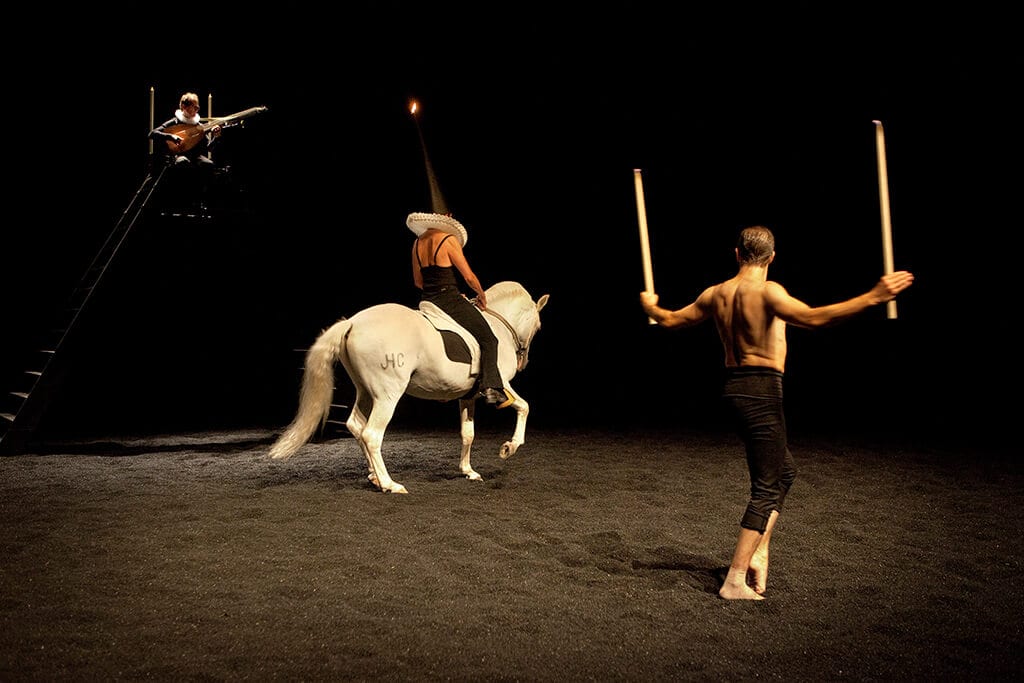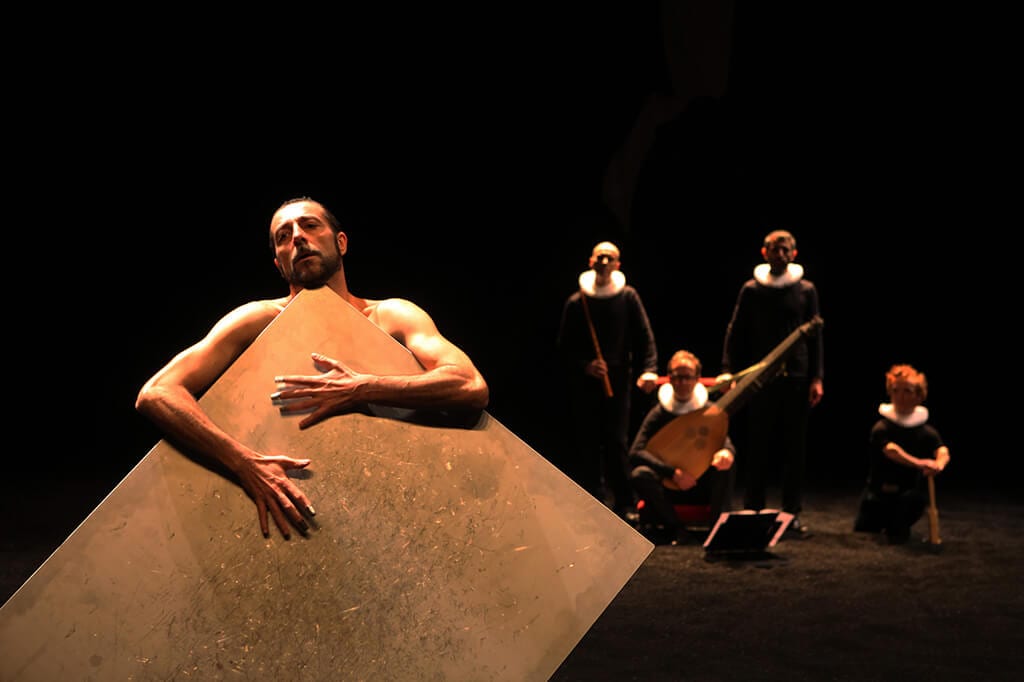If you ask most people about theatrical performances with horses I expect their first thoughts will be of the circus, or the ceremonious dressage of the Vienna Riding School, or perhaps even brave performances of Wagner’s Ring where Brünnhilde’s steed puts in a live appearance. None of these experiences prepares you in any way though for the extraordinary evening that is Golgota, the creation of legendary horse trainer and impresario Bartabas, and the contemporary flamenco dancer Andrés Marín.
Since the 1980s Bartabas has developed his extraordinary communicative skills with horses through his theatre-company Zingaro and the Versailles-based Academy of Equestrian Arts. His priority has lain not in equestrian showmanship, though there is plenty of that indirectly, but rather in developing new forms of choreographed expression that involve horses, music, theatre and dance in compelling and unexpected combinations. In recent years he has devised shows in combination with other dancers, musicians and actors who similarly combine technical accomplishment grounded in a distinct tradition and an openness to experimentation.
The evening takes the shape of an extended free meditation on the ceremonies of Holy Week in Seville with a notable bow to the painterly legacy of El Greco and Zurburán. The symbols of Counter-Reformation Spanish religiosity are very much to the fore: long tapered candles, pointed hats, cowls, veils, bells and stark colour contrasts of red and black, all sombrely lit, mainly from above. Marín sometimes dances alone, but largely in combination with Bartabas and one of four immaculately groomed and apparelled horses. The stage is covered in a thick layer of black particulate foam, which silences the feet of all the performers, thus enabling a greater exfoliation of physical expression. Positioned to the side of the stage, but also moving around in processional sequences are three be-ruffed musicians: counter-tenor Christophe Baska sings throughout the sacred motets of Tomás Luis De Victoria with exceptional technical control, tonal beauty and grace of phrasing, accompanied by Marc Wolff on lute and Adrien Mabire on cornet and shofar. William Panza, capers, stage-manages and slyly commentates on events like one of those knowing tragi-comic dwarves that people the court studies of Velázquez.
There is no guiding narrative but a loose structure is provided by the Stations of Cross and the liturgical rituals associated with them. As Bartabas says, it is as though he and Marín have been locked inside a Spanish church and allowed to play with the full repertory of objects and symbols they found there. There is, though, nothing random about their play. Each scene is remarkable for the sheer beauty of the tableaus, the virtuosity of the equine and human movement, mimicking and shadowing each other, and the intensity with which all the resources of theatre and the full range of senses (yes, even scent!) are brought to bear on the theme of Christ’s Road to Calvary. The sequences marinade in the memory and yield further layers of meaning as you reflect on them and create deeper connections that stem ultimately from the unique alchemy of communication between horse and man.
A brief review can only hint at some of the creative riches contained in this show: an opening scene in which the hooded dancer scourges himself with the horse’s tail before dancing a pas de deux with a horse’s skull – Golgotha, literally; a moment when Bartabas swings incense burners in elaborate arcs around his unflinching horse; the startling contrast of the two formal flamenco episodes taking you further into the heart of darkness; Bartabas and his horse falling to the ground as one in imitation of Christ’s fall under the weight of the Cross; and a final devastating meditation on the Crucifixion in which one horse writhes on the ground in empathy with the crucified Marín above him before moving over to kiss a kneeling Bartabas as the lights fade…
Golgota is hard to categorise because it deliberately breaks down boundaries between art forms, and juxtaposes performers disconcertingly. But it also imaginatively evokes the history, art, religion and cultural traditions of Spain with a unique, specific intensity that finds universal resonance. I found it mesmerising and cannot recommend it too highly.



